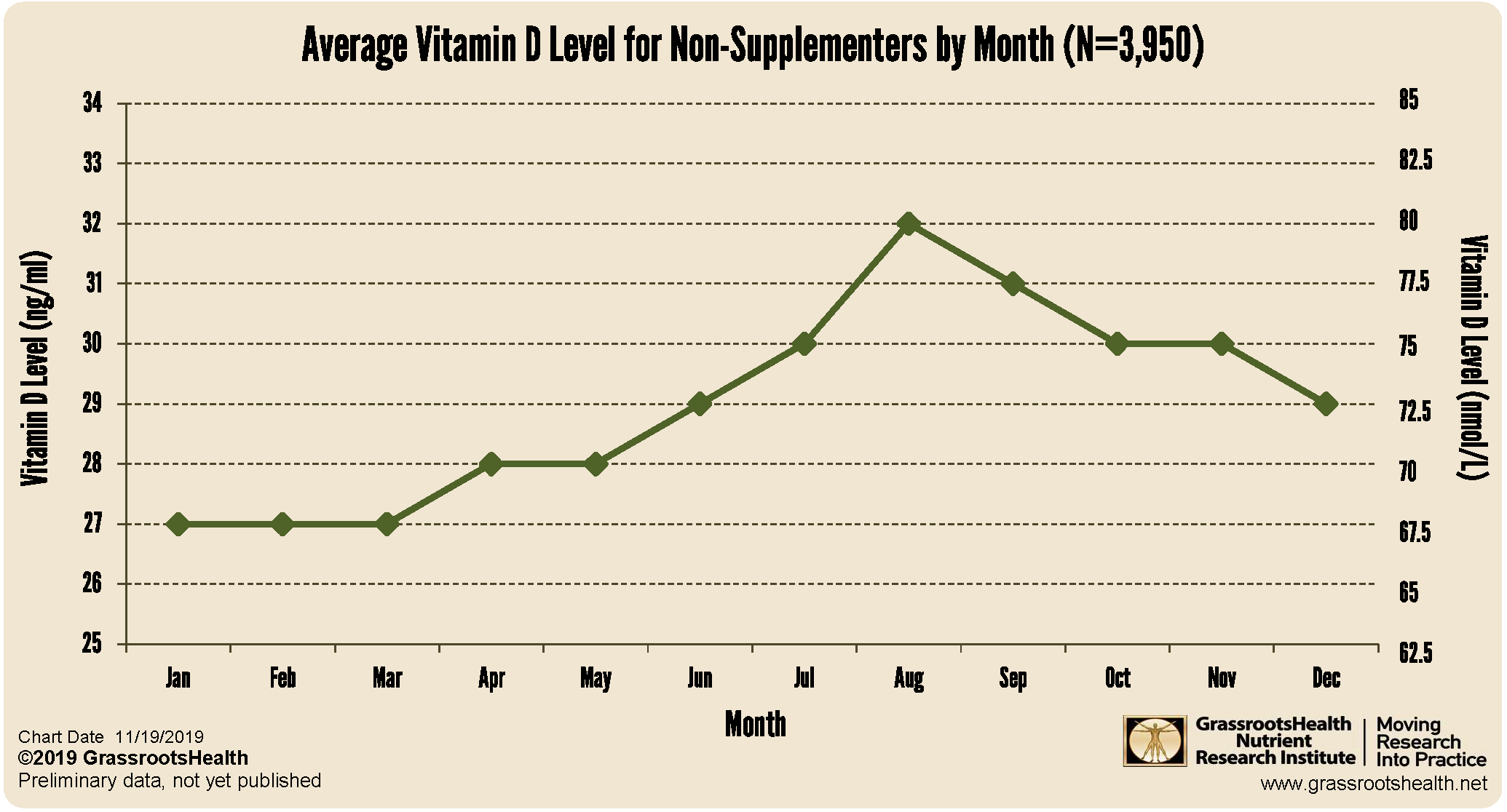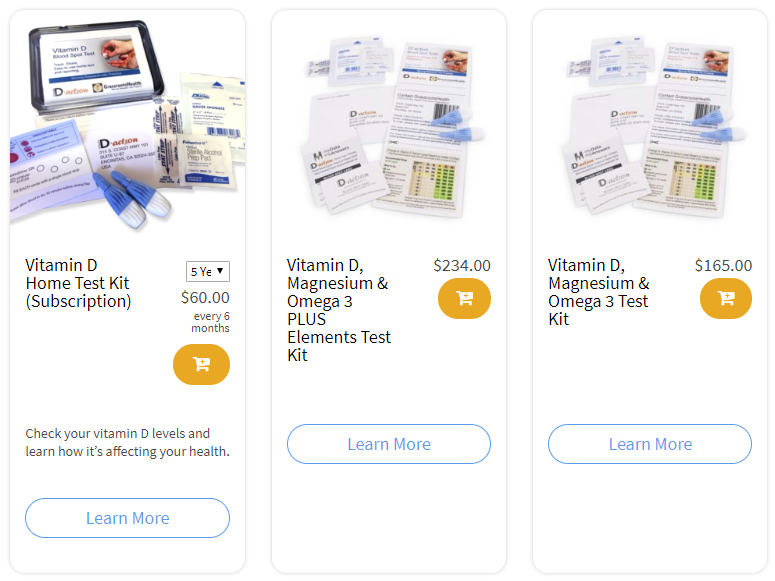Published on February 24, 2020
 In our last post, we revisited the topic of vitamin D in our food. For most people, what we eat simply does not provide us with the amount of vitamin D our bodies need. Sun is another excellent source of vitamin D, however, it can be difficult to achieve the levels necessary with sun exposure alone throughout the year.
In our last post, we revisited the topic of vitamin D in our food. For most people, what we eat simply does not provide us with the amount of vitamin D our bodies need. Sun is another excellent source of vitamin D, however, it can be difficult to achieve the levels necessary with sun exposure alone throughout the year.
What are the vitamin D levels of those who don’t supplement?
Approximately 22% of GrassrootsHealth participants report that they do not take any vitamin D supplements. Using your data, we created a chart of the average vitamin D level for participants who do not use a vitamin D supplement by month to show the fluctuations in vitamin D levels over the year. As shown on the chart below, the lowest levels among GrassrootsHealth participants are between January and March. There is not a time during the year that these participants reach an average level of 40 ng/ml as recommended by our Scientists’ Panel.
Is it possible to achieve 40 ng/ml with sun and diet alone?
Some studies do show that vitamin D levels in the range of 40-60 ng/ml can be achieved with sun exposure or even indoor tanning and sun lamps. However, it takes more than just 10-15 minutes per day for most people, and while some individuals can reach 40 ng/ml though sun exposure alone, many may not be able to due to factors such as skin type, burning threshold, latitude, cloud cover, and time availability. Results from a study published in 2018 showed that Caucasians living in the UK needed nine minutes of mid-day sun with arms and legs exposed each day from March to September to maintain a vitamin D level at or above 10 ng/ml (25 nmol/L) year-round, which is significantly below the optimal range for health.
Even if the sun can’t be your only source of vitamin D, it can still be an important contributor to vitamin D status. A study published in 2019 found that sunshine is a significant determinant of vitamin D level even among those taking 2000 IU/day of supplemental vitamin D.
What is the bottom line?
First, it is impossible to know if your vitamin D level is within the recommended range without testing your vitamin D level. When relying only on diet and sun exposure for vitamin D, GrassrootsHealth recommends measuring the vitamin D level at the end of summer (October) when levels are most likely the highest, and at the end of winter (March) when they are most likely lowest, and adjusting vitamin D routine accordingly to maintain a target level of at least 40 ng/ml.
Make sure you know your vitamin D level, and take steps to keep it within a target of 40-60 ng/ml or 100-150 nmol/L! Through GrassrootsHealth Nutrient Research Institute, you can also test your essential elements magnesium, copper, zinc and selenium, toxins such as lead, mercury and cadmium, as well as your omega-3 levels, inflammation levels and thyroid stimulating hormone (TSH) level. Find out your levels today! Log on to the test selection page (click the link below) to get your tests and see for yourself if your levels can be improved.
Make sure you track your results before and after, about every 6 months!
Click Here to Access the Test Page
How can I track my nutrient intake and levels over time?
To help you track your supplement use and nutrient levels, GrassrootsHealth has created the Personal Health Nutrient Decision System called
For each specific supplement, you can track what days you take it, how much, and many other details. This will help you know your true supplemental intake and what patterns of use work for you to reach and maintain optimum nutrient levels. Check it out today!









